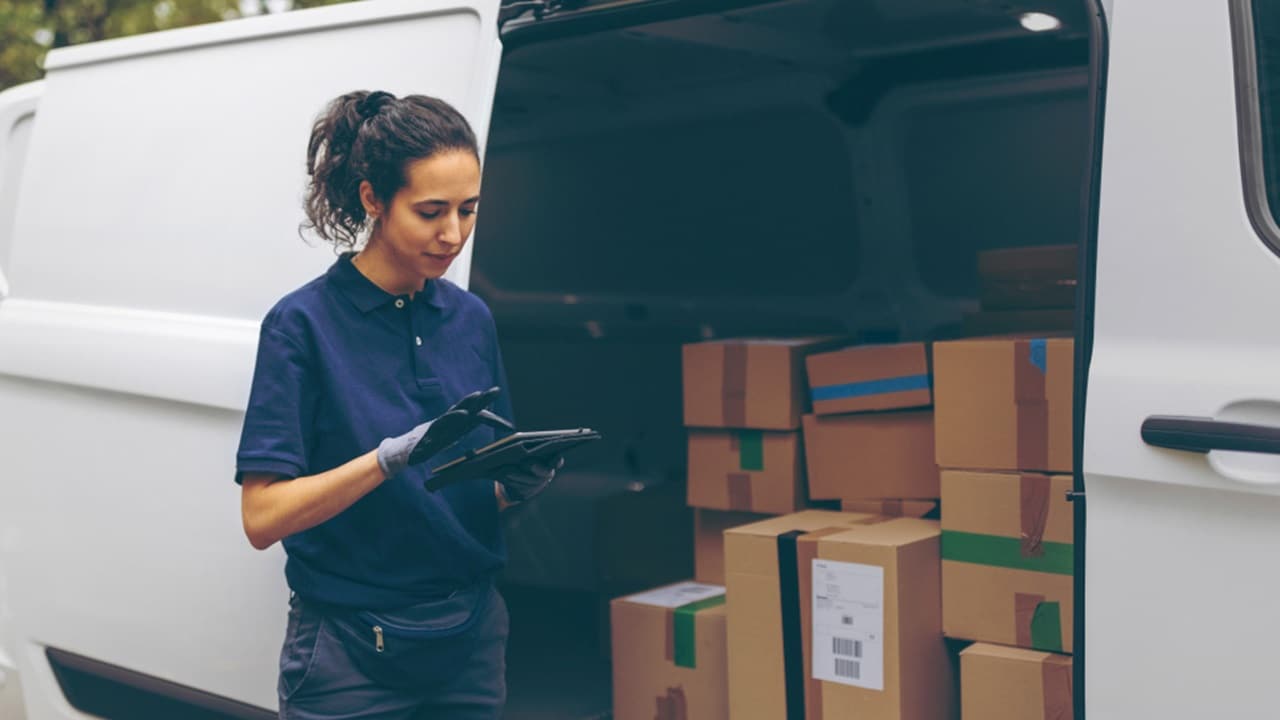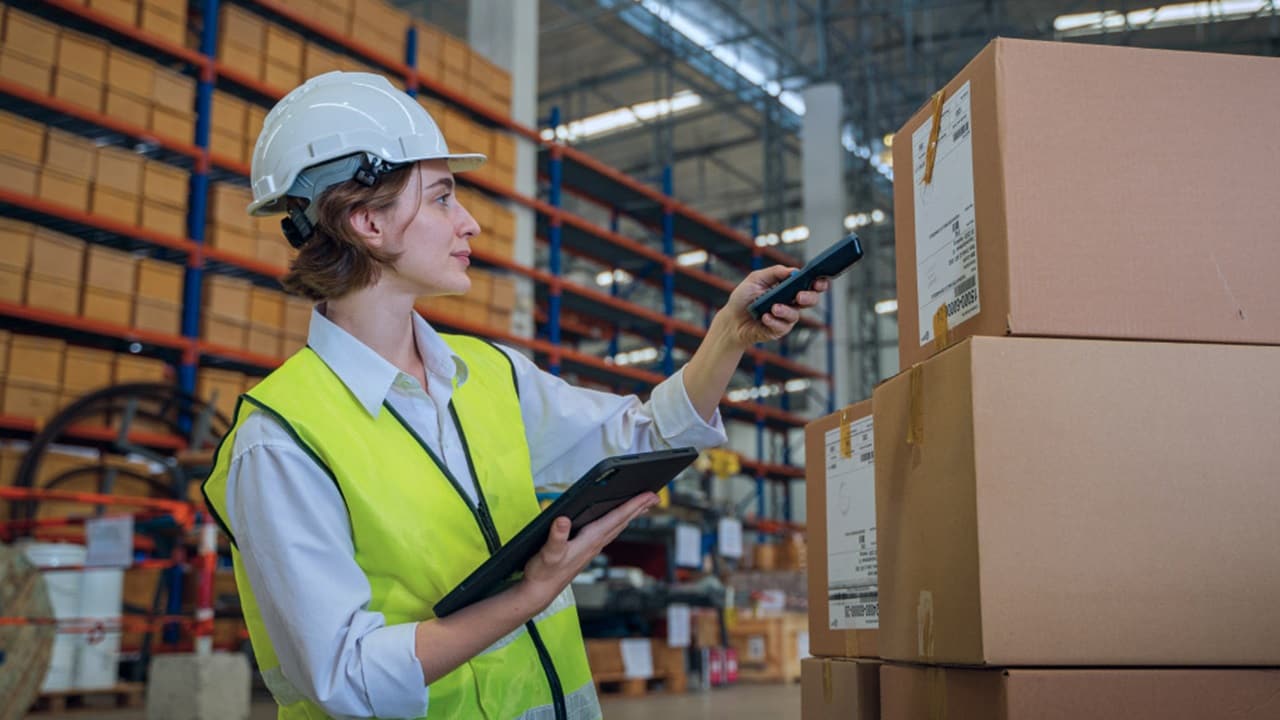Outsourcing your warehousing to a third-party logistics company lightens the load on your internal operations. But by doing so do you loosen your grip on the very thing that makes your omnichannel fulfilment tick?
If you’re unsure which is best for your business – outsourced or inhouse – you’ve come to the right place. Here we explore the pros and cons of each approach and provide a simple checklist for you to make the right choice for your business. So, let’s dive in.
Outsourced warehousing
The pros
According to FreightWaves, 43% of shippers say warehouse operations are their most frequently outsourced supply chain activity. But why? Here are a few reasons.
- It’s cost-effective - With outsourced warehousing, you only pay for the space you need inside – rather than buying, building and running an entire facility (or set of facilities) yourself. That’s an enormous capital expenditure saving in and of itself. Paying as you go also helps you to stay on top of your cash flow. Not only are you paying smaller amounts, but you’re also saving on the cost of labour, equipment and maintenance. Making your operating expenses lower and more manageable.
- The freedom to scale up or down - When you don’t have to spend the time or the money building a facility, it becomes a whole lot easier to scale. Both up and down. When you’ve more orders, you pay for more space. When you’ve fewer orders, you cut back. Simple. It’s not just about size, though. Outsourcing enables you to scale geographically, too. If you’re expanding overseas, for instance, you can easily add warehouses in a location that’s closer to your target market. Or pull out if there’s no appetite. Something that’s particularly important for businesses that are subject to large seasonality swings, such as those in the lifestyle industry.
- More expertise, access to new technology - Another benefit of partnering with a third-party logistics company is their expertise. They’re the specialists, the companies with years of experience behind them, the people who do it best. Along with their in-depth expertise that you can easily tap into, the right partners will also be investing heavily in innovation to stay at the head of their field. Whether that’s automated robots, warehouse management systems, or inventory drones, you can expect to benefit from these innovations too — just without incurring the costs.
- No waiting around - A study from World Bank Development Indicators found that in 2019 (the most recent available data), the time required to build a warehouse in the EU was 180 days. Depending on the country, size and type of warehouse facility constructed, it can take shorter or longer. Simple storage facilities can be designed and constructed in a matter of weeks, while more advanced facilities, such as a third-party logistics warehouse, could be more like 6-8 months. The upshot? Whatever warehouse you build, you’ll have to wait. And this is all time where your operations will be disrupted. But if you outsource, you’ll never have to experience this issue.
The cons
So, we’ve looked at the pros of outsourced warehousing, how about the cons?
- Overdependency on a third-party - For all the significant and varied benefits of a third party, there’s a caveat. It’s that you usually have little direct control over operations. Take staffing as an example. In most cases – though not all – you don’t get much say in the hiring of warehouse staff. So, they might not have much experience in your industry at first. Overcoming this issue requires a great deal of trust between your business and the third party you use — so take time to evaluate potential partners properly.
- Potentially rigid operations - While outsourcing provides flexibility in terms of the storage space and the resources available, it may limit your flexibility in how your warehouse operations are run. When you’re not managing the process directly, it may prove more difficult to make rapid changes or adjustments to your working practices. Worse still, with some vendors, you mightn’t even get a choice.
- Geographic limitations - Though there may be a large number of warehouses in Europe to choose from – Statista estimates there to be 27,500 in 2024 – the vendors may not have the sites or the capacity in the exact locations your business needs. Let’s use an example. Imagine you’re a UK retailer looking to expand into Europe and see your warehousing partner has one site in Hamburg. On paper, that may seem adequate. But if the core of your target market is in Czechia, Hamburg won’t provide the proximity and speed you need. A site in Dresden would be better, but your partner might only have the Hamburg facility. Your hands are tied.

Inhouse warehousing
The pros
Having looked at outsourcing, let’s now look at the other side of the spectrum – inhouse warehousing. Starting with the pros.
- A tighter grip - If it’s control you’re after, inhouse warehousing is the way to go. It gives you complete control over all aspects of the process and you get to make every decision — from the size to the location to the staffing to the operational procedures. A clear example of this advantage in today’s market is that, if you own the site, you won’t be vulnerable to rent fluctuations that some third-party logistics companies may impose on their customers.
- Flexible operations - Linked to this is operational flexibility. When you’ve full control, it’s much easier to adapt operations to changing business needs, market needs and inventory fluctuations. There’s less red tape. You don’t have the back-and-forth you’d get with an outsourced partner. Say you want to reconfigure your storage layouts to see if that’ll improve delivery times. With inhouse warehousing, you can just test it and find out if it works.
- Strategic design choices - Though building a facility takes time, there are benefits to constructing it yourself. When you build it from the drawing board, you can build it to BREEAM or LEED standards with features including: windows that allow natural light to flood in and mean less electricity is used; drainage systems that enable rainwater collected on the roof to filter down and be used in the toilets. These innovations are much harder to retrofit into the design and may be more difficult to find through an outsourced partner.
The cons
Now to the cons of inhouse warehousing. Let’s take a look.
- The CapEx vs OpEx question - With the biggest pro for outsourced warehousing being cost-effectiveness, it’s unsurprising that it’s also the biggest con for inhouse warehousing. It takes a significant investment to build and run your own warehouse, not only in terms of the capital required for the facility. Equipment, staffing, training — these are all large ongoing costs. Add to this the fact that it takes a long time to see a return on investment, nine years to be precise, according to Advanced Manufacturing Solutions. Is that a risk worth taking?
- Limited scalability - Due to the cost and time barriers involved, there’s also a huge scalability challenge. That mightn’t be an issue if you’re happy with your current size. Or if you’re incredibly effective at demand forecasting. But in 2024, who is? The opposite is more likely. And if you’re experiencing a period of rapid growth, with inhouse warehousing it may be difficult to accommodate the sudden increase in volume without incurring additional costs or disruption.
- Risk of underutilisation - Finally, inhouse warehousing has a completely different set of metrics. And often they’re much stricter. When you own the facility, there’s a lot more pressure to maximise the footprint effectively, to fill the entire warehouse, to keep the shelves constantly stocked. Otherwise, you’re just wasting space and, more importantly, money.

Which strategy is right for your business?
Predictably, the answer to this question is: ‘it depends.’
On what, though, is perhaps the better question. It can be anything from the size of your business to what industry you’re in, where you’re based, what resources you have, and how you like to work — to name but a few.
So, to help you make this decision, we’ve created the following checklist.
- Do you need complete flexibility in your logistics operations?
- Is ease, reliability and cost-effectiveness more important to you than control?
- Do you need to scale your logistics operations up and down rapidly?
- Do you want to expand or launch products into new markets?
- Do you need to recruit to gain the logistics expertise you need?
- Do you want to reduce the greenhouse gas emissions of your logistics operations?
- Do you want to access advanced warehousing without making significant CapEx investments?
- Mainly yes? Outsourcing could be right for you.
- Mainly no? Perhaps in-house is the right course of action.
What’s more, if you’re looking for an outsourced warehousing partner, we can help. At Maersk, we’ve an extensive range of warehouse assets that are ready for you to use straight away, including over 450 warehouses and 350 fulfilment sites globally. To find out where they are and what the current capacity is:
For more information on how you can develop your omnichannel fulfilment strategy, download our interactive workbook:
未来,您想随时了解必读行业趋势吗?
您已经完成了,欢迎“登船”!
很抱歉,发送您的联系请求时出现问题。
请查看表单字段,确保所有已正确填写所有必填信息。如果问题仍然存在,请联系我们的支持团队以获得进一步的帮助。
未来,您想随时了解必读行业趋势吗?
使用此表格注册,即可直接在您的邮箱中接收我们的洞察见解,进入一个真正的综合物流世界。简单操作,即从我们为您量身定做的精选文章中获得启发,了解相关行业洞察信息。您可以随时取消订阅。
I agree to receive logistics related news and marketing updates by email, phone, messaging services (e.g. WhatsApp) and other digital platforms, including but not limited to social media (e.g., LinkedIn) from A. P. Moller-Maersk and its affiliated companies (see latest company overview). I understand that I can opt out of such Maersk communications at any time by clicking the unsubscribe link. To see how we use your personal data, please read our Privacy Notification.
By completing this form, you confirm that you agree to the use of your personal data by Maersk as described in our Privacy Notification.













